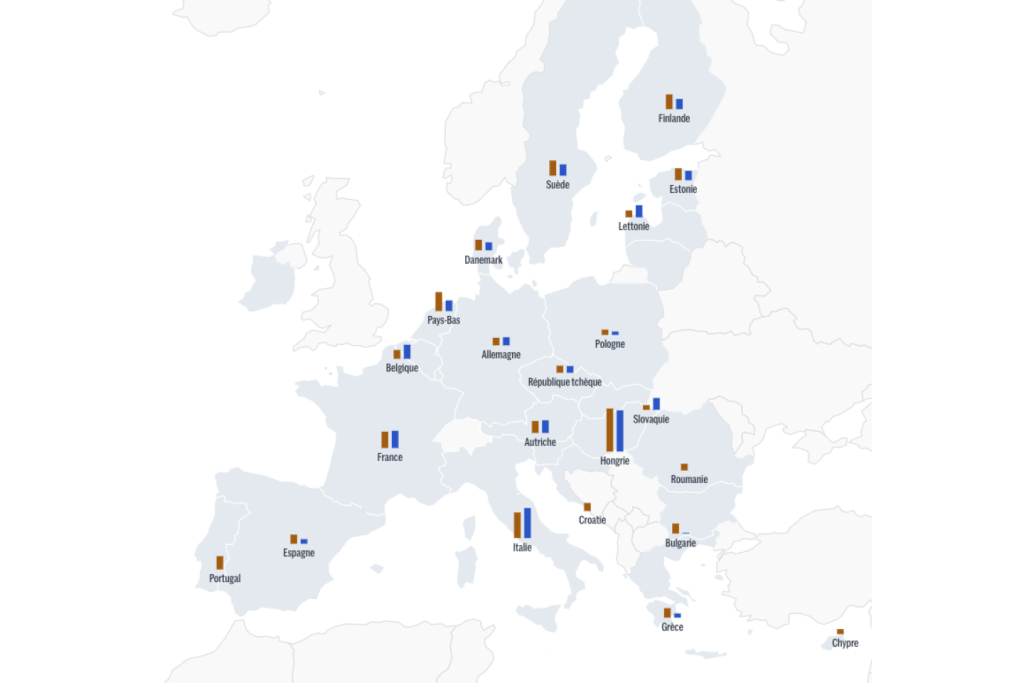With the upcoming elections approaching, candidate troops vying to enter the European Parliament are sharpening their weapons. According to polls, parties affiliated with the European Conservatives and Reformists (ECR) and Identity and Democracy (ID) groups, which include the National Rally, can hope to become the third and fourth political forces in the European Parliament. The extreme right is strongly entrenched in Italy, Hungary, and Scandinavian countries.
In the European elections of 2019, the extreme right made unprecedented gains, particularly in Italy (with 34% for Matteo Salvini’s League) and in France (where the National Rally came out on top). In around ten other member countries, the extreme right obtained scores between 10% and 20%, increasing its presence in the hemicycle from 37 to 115 seats. In 2019, five extreme right parties were part of government coalitions, with only one, the Austrian Freedom Party (FPÖ), in a leading position. This rise of the extreme right has been notable in countries like Sweden, Finland, Slovakia, Croatia, the Netherlands, Hungary, and Italy.
Catherine Fieschi, an expert on extremism, notes that the coalition led by Giorgia Meloni has been one of the biggest changes since 2019. By normalizing relations with Brussels and supporting Ukraine, parties like Fratelli d’Italia and the Polish PiS have gained credibility within the European Conservatives and Reformists group. The Fidesz party in Hungary has also shifted towards a more overt extreme right stance. In countries where the extreme right was previously weak, such as Bulgaria, Cyprus, and Portugal, there has been a notable rise. In countries like Slovenia and Ireland, other conservative parties have adopted rhetoric similar to that of the extreme right.
With a rise in coalitions integrating more radical far-right parties, Cas Mudde, a professor of international affairs, predicts a continuing increase in the popularity of the extreme right rather than a significant surge in the upcoming elections. The trend of closeness between the traditional right and the extreme right is reflected in institutional alliances, with a greater number of government coalitions including the most radical parties. The upcoming elections are expected to showcase the ongoing rise of the extreme right throughout Europe. This trend is evident in the information presented about the main extreme right and populist parties in each European country, including their electoral dynamics over the past fifteen years in both European and national elections.


